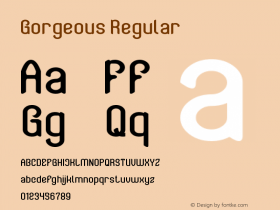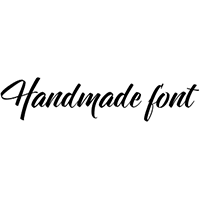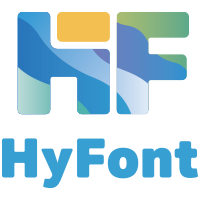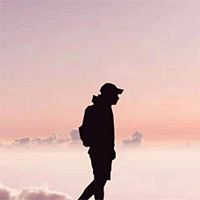My Type of Music: Holly Herndon, The Rolling Stones, Green Day, Led Zeppelin, Rihanna

Researching the album covers for this episode of My Type of Music once again reminded me how relatively difficult it is to find out who designed them. For ScreenFonts I almost always can find the credits on the Internet Movie Poster Awards website. With album covers it's not that easy though. My searches on the almighty DuckDuckGo (the search engine that doesn't track all your moves ; ) using "artwork", "cover art" and so on rarely yield any relevant results. Fortunately I have two alternative options. One is the local Fnac, where a friendly sales assistant I've become acquainted with allows me to open the shrinkwrapped CDs to check the credits in the booklets. The other is contacting the artists or management directly via their websites or Twitter, but I find it much harder to get through to the right person. But when I succeed, it always is satisfying and instructive, even though this is a quite time-consuming process. So join me and let me share some of the knowledge I gained these past few days.

To my great pleasure we start this episode with a honey. ; ) The Flip Is Another Honey is the third solo release in 2012 for Mike Doughty, the former frontman of Soul Coughing. This collection of covers ranges from Broadway (Guys and Dolls' Sit Down, You're Rocking the Boat) to rock (Cheap Trick's Southern Girls and Thin Lizzy's Running Back) to Americana (John Denver's Take Me Home, Country Roads). The title is taken from a 1957 Variety Review of a Jerry Lee Lewis single, meaning "the b-side is also fantastic."
The great image on the cover was taken by the artist, Mike Doughty.
I was walking around the town area of Negril, Jamaica, which is between the beach, where the resorts are, and the cliffs, where the bars and restaurants are – so, it's the area that tourists pass through on the way from one to the other. I wanted to take some photos of a half-sunken wreck of a ferry – it had clearly been sitting there for years – that I had seen from a taxi window, when I stumbled upon this burnt-out shack.
I took this in 2004 and didn't really think about it until I was excavating an old hard drive in August of 2012. I was just about finished with the album, and it seemed a great match for a record consisting of my interpretations of other songwriters' songs. Partially self-effacing, partially mocking, and somewhat of a reference to the state of the music business.
I like to think that "grove music" isn't a misspelling of "groove music", but some kind of music made purposely for orchards.
The album sleeve was designed by Carolyn Wachnicki, a big aficionado of typography and album art who has devoted a good portion of her career to designing packaging for artists. Her choice of type is spot on and beautifully complements the photograph. By reprising the exact green from the walls of the shack for the artist's name in Bourgeois Ultra Condensed Italic, and setting the album title in the naive-looking Curly Lady, the typography mirrors the hand-painted lettering on the shack. In doing so she manages to achieve a strikingly harmonious atmosphere.

Temporal is a compilation album by American Post-metal band Isis. The CD/DVD set contains B-sides, demo recordings, unreleased tracks and remixes that range from 1997 to the end of the band in 2010. The artwork was created by Aaron Turner, the guitarist and vocalist of Isis, who also is a graphic artist, and the founder of label Hydra Head Records, with photography by Mike Gallagher and Faith Coloccia. One aspect that sets Turner's work on album covers, concert posters, and other music-related graphics apart from typical design for heavy metal or rock is his approach to typography. In a reply to a comment that the text on one of his posters is "hard to read hence the poster does not serve its purpose to inform about the event", he explains on his blog:
on a broader scale, i also generally reject the idea that posters and album sleeves and t shirts have to be marketing tools with overly obvious type/graphics, as opposed to more artistically oriented pieces that invoke the true spirit of the music they are intended to represent. if the bands being represented aren't writing 3 minute pop songs with inane choruses that beat the listener into submission, why should the representative graphics serve that purpose? i like to think the audience that follows these bands isn't the type of audience that requires overly simplified/commercial imagery and type in order to draw their attention to the "product".
In light of these statements Turner's typographic treatment for the Temporal album cover is rather subdued; a combination of custom-weathered Compacta and classic Adobe Garamond capitals. His design achieves a thoughtful, delicate balance between the bright orange type positioned just under the horizon and the streaks of the same colour raining down on a nocturnal urban scene.

Silver & Gold, the second set of Christmas-related songs (the first was 2006's Songs for Christmas) is five discs of songs recorded by Sufjan Stevens between 2006 and 2012. The album sleeve is a throwback to the late seventies / eighties, a painting of a Christmas ornament surrounded by the artist's name and album title drawn in a toothpaste-style script. The green-and-purple border, the extruded "Sufjan Stevens" (with double outline) and the space-y background only add to the quaintness of the artwork.

After two EPs last year, Manchester producer Andy Stott released the full-length album Luxury Problems featuring the operatically trained vocalist Alison Skidmore. Entirely type-less, the image of the diving woman was selected by the Modern Love label founder Shlom Sviri and beautifully, yet in an unusual way, visualises the tension at the heart of electronic music. Says Andy Stott:
When an album's finished, Shlom Sviri tries to find an image that has the same sort of impact as the music. For this record, he came over to my house with this photo and was like, "I think I've got it!" It's just incredible, a perfect image. The lady's doing such a controlled dive, and it could quite easily go wrong. It represents the fine line between the point of control and being a mess.

More athletic bodies in motion on Movement. Using a computer, the Tennessee-born Holly Herndon manipulated her vocals to form her experimental electronic debut full-length release. The image on the cover was taken from her music video directed by Mathew Dryhurst.
The cover and custom square sans serif used inside the album package were designed by Kevin O'Neill at Will Work For Good. Kevin also came up with the Fluxus poem that features in the video and inner sleeve of the album.


When we spoke to Kevin the concept leaned heavily toward bodily abstractions, which is a central theme of the record. The font was inspired by a gorgeous old Japanese movie poster from Michael Haneke's Funny Games, who we all admire very much and has such a brutalist quality to all of his work.

For the artwork for their 10th studio album Oui Oui, Si Si, Ja Ja, Da Da, the British ska band Madness collaborated with an icon of British pop art. The text-only cover is the brainchild of Peter Blake, best known for creating the legendary album sleeve for Sgt. Pepper's Lonely Hearts Club Band. Underneath the band name in Stencil the tongue-in-cheek conceptual piece simply features the rejected titles for the album in a casual monolinear script, crossed out, followed by the actual title in overwrought ornamental letters at the bottom.

The artwork for the previous album by July 2010 episode of My Type of Music. The cover for their new six-track EP An Omen is just as dark, but in an entirely different way. While the collage for the self-titled debut EP was reminiscent of collage art from the beginning of the previous century, this image is resolutely tech-inspired, with static warping a monitor screen image and the computer-like minimal sans serif. It is hard to believe that these two totally different covers are by the same person – Rob Sheridan, who is responsible for the art direction, photography, and post-production.

To celebrate its 50th anniversary, legendary rock band The Rolling Stones issued GRRR! – a three-disc box set with two new songs, or a four-disc deluxe box set including an additional 30 songs from the group's back catalogue. All editions feature artwork by Walton Ford. Born in 1960 in Larchmont, New York, the American artist is known for his large scale watercolours in the style of Audubon's naturalist illustrations, each one a meticulous study in flora and fauna. Those paintings are filled with symbols, clues and jokes referencing a multitude of texts from colonial literature and folk tales to travel guides. This humour can also be found here. Although the gorilla has a frightening set of teeth, it looks surprisingly jolly with the Stones' signature tongue-and-lips logo for a mouth. The painted letters match the illustration well, yet the roughness of the brush script provides a good counterbalance to the ape rendered in painstaking detail.

The four-track EP Put Your Sad Down is kind of a candidate for LTypI: Lack of Typographic Imagination, the humorous Flickr Group featuring designs that spell out the name of the typeface. Indeed, all type on the cover for the New York dream pop duo School Of Seven Bells's latest release is set in… Bell.


The second of Green Day's 2012 trilogy – ¡Uno!, ¡Dos! & ¡Tré! – produced by Rob Cavallo is said to have garage rock influences. The brightly coloured, exuberant trio of covers featuring one band member each was designed by Chris Bilheimer. Art directing bands such as Green Day and Weezer, Bilheimer is best known for his collaborations with Michael Stipe. Together they created all the art and design for R.E.M. together for 15 years, garnering 3 Grammy nominations for Best Package Design and selling more than 15 million copies world-wide in the process. They know each other from the University of Georgia where they both attended the fine arts program, and in 1994 – 14 years after Stipe formed R.E.M. – Bilheimer began working with the band. Their collaboration also produced a font family, the R.E.M. Collection which includes typefaces specifically created for R.E.M. The Green Day covers however simply feature a weathered compact extra bold sans.

The album cover for Koi No Yokan, the seventh studio release for the Sacramento alternative metal group Deftones was designed by Futura 2000. While he is primarily known as a graffiti artist, Futura 2000 is very active as an illustrator and designer of album sleeves. He first became involved with British punk rock band The Clash, producing a sleeve for their This Is Radio Clash 7&dquot; single and handwriting the sleeve notes and lyrics sheet for their album Combat Rock. He also toured extensively with The Clash during the Combat Rock tours, "performing" with them on stage by spray painting backdrops whilst the band performed. Years later James Lavelle resurrected his career by getting him, alongside Ben Drury, to produce the artwork for several releases on Mo' Wax records; this also led to Futura producing the imagery which has largely defined Lavelle's Unkle project.
The image of an interior looks strangely futuristic with its endless repetition of minuscule lights. While I am not a fan of its omnipresence which betrays a lack of imagination from so many designers, here the clean, wide and wispy character shapes of the Neue Helvetica Extended capitals nicely complement the ethereal setting.

This one I just received as a birthday present from Emmanuel Tzwern, the singer/songwriter/guitarist of Troubleman, the band I've been playing with the longest. Celebration Day is the recording of Led Zeppelin's 2007 concert at London's O2 in honour of Atlantic Records founder Ahmet Ertegun, reuniting remaining original members along with Jason Bonham, son of the late John Bonham, on drums, as they performed together for the first time in over 30 years. The packaging was designed by Shepard Fairey who uses his signature style and motifs depicting the British blues rock band namesake hovering over the British capital. Although I am not such a big fan of gradients, the red and yellow scheme in combination with the turquoise add a certain freshness to the overall image. The typography is deeply indebted to the Art & Crafts movement, with the logo set in a customised Quaint Gothic (or custom lettering inspired by that typeface). Similar designs include ITC Rennie Mackintosh and ITC Willow.

I find the new design definitely a step up from the previous cover for Mothership, especially with the album title integrated in the zeppelin in a rather awkward way…
… and apparently the whole design having been recycled from a 20th anniversary poster for SXSW, as this controversial article on The Daily Swarm suggests.


If you know me a little you won't be surprised when I tell you I have a soft spot for consistent series. Once in a while an artist decides to "brand" his or her sleeve designs – bands like Travis do it over several albums, while artists like Big Sean or Maxïmo Park have the singles match the full length album they are issued from. This is the case for The Evolution Of Man, the fourth release for the British singer/rapper Example, written while he was in Australia. The cover image is in the same vein of the artwork for his singles Say Nothing and Close Enemies. A hand holds up a picture of Example's childhood against a specific background, creating a surprising juxtaposition. Say Nothing is the weakest, with the rapper as a toddler simply looking with eyes of wonder from a plane seat. Close Enemies is already a lot better: it confronts a young Example in bathing shorts with a bunch of girls in boots and hotpants on the beach. The full album image is by far the best: a young version of the singer throws his arms in the air standing in front a lake, which makes way for a huge live crowd at an open-air concert. ITC Avant Garde Gothic is adequate, but again I would have preferred a contemporary, more interesting typeface choice. The only thing that bugs me is that the typographic treatment – the artist's name in white and all lowercase in a black bar –reminds me of the Oasis albums, particularly Time Flies… 1994–2009 which also shows a large live crowd. Coincidence?…

Another kid, but this time in a much darker setting, also literally. The Odds, the third full-length release for The Evens, the Washington DC punk duo of Amy Farina and Ian MacKaye, shows the silhouette of a young boy in a park with a menacing cloudy sky behind him. The threatening atmosphere is echoed in the disintegrating letter forms of FF Trixie, perhaps the most classic amongst the distressed typewriter faces.

On Rebel Soul the Twisted Brown Trucker band return to back up Kid Rock. The album artwork looks indeed very… errr… rebellious? Maybe he fancies himself a typographic rebel by defiantly selecting the wrong capital 'R' glyph in Bickham Script and having its swashes horribly crash into the rest of the word? Or maybe it's the rebellious splashes of colour behind his heavily Photoshopped portrait? The tiny, timid splashes. Oy oy oy…

Unapologetic, the seventh studio release for pop singer Rihanna featuring Chris Brown (yup, the very same poser that beat her into hospital; what a signal to send out to impressionable young fans), Eminem, Future, and David Guetta as guests sports a photograph by Michael Muller. This American photographer is known for his celebrity and advertising photos. The glamour shot shows the Barbadian singer nude with all kinds of words related to herself and the album scribbled over her picture in simple black and white, as if it were graffiti-like tattoos. A black scribble covers her breast; the word "Love" emphasises one eye while blocking out the other. It's all a little too commercial for my taste, but a very efficient album cover nonetheless, slightly risqué.




































 闽公网安备35010202000240号
闽公网安备35010202000240号